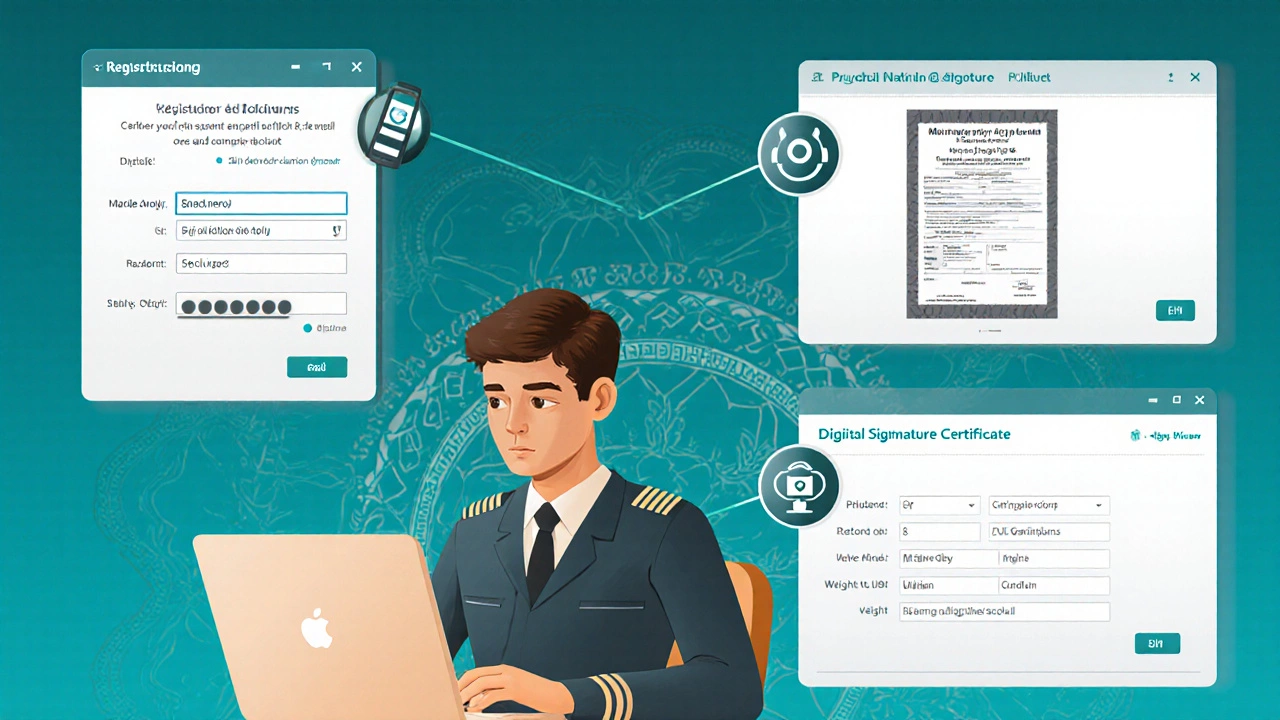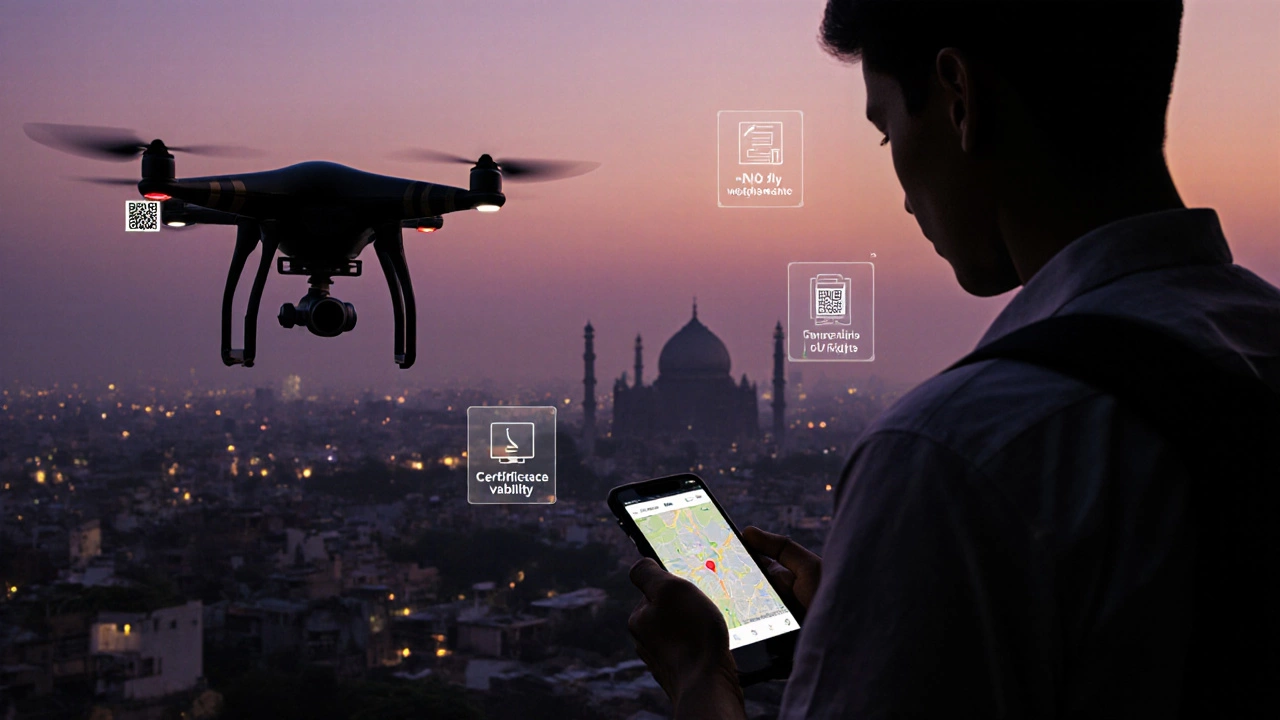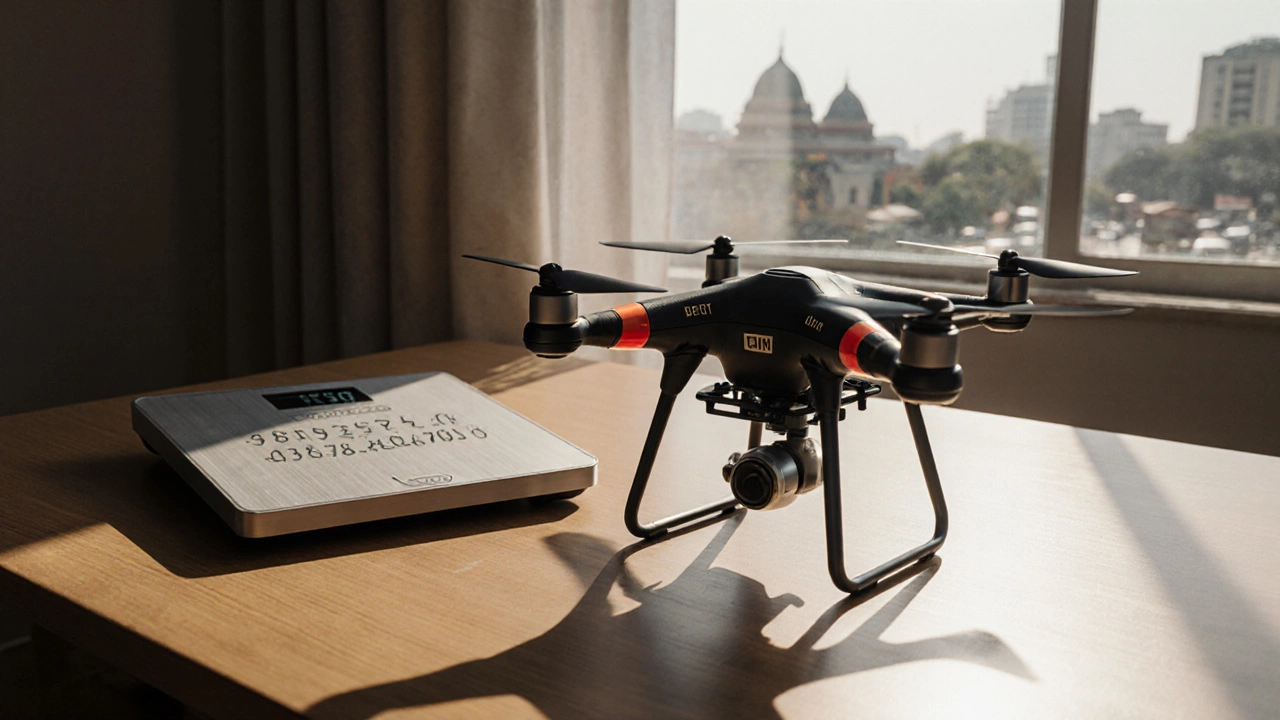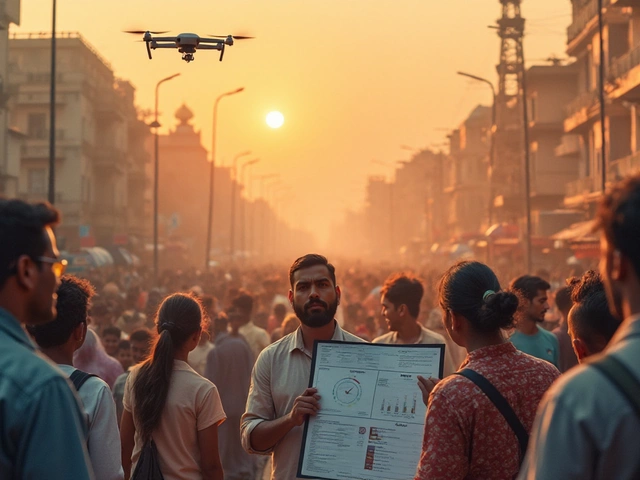Drone Registration Checker
Check Your Registration Requirement
Enter your drone's weight to determine if registration with DGCA is required in India.
Quick Takeaways
- All drones above 250 g must be registered with the DGCA under the drone registration India scheme.
- Registration is done online via the Digital Sky Platform and takes 7‑10 business days.
- You’ll need an Aadhaar‑linked mobile number, a digital signature certificate, and the drone’s UIN.
- Flying an unregistered drone can lead to fines up to ₹50,000 or seizure of the equipment.
- Categories below 250 g are exempt, but you still need to follow basic operational rules.
India’s drone ecosystem has exploded over the past few years. Photographers, filmmakers, and hobbyists all ask the same question: “Do I really have to register my drone?” The short answer is yes-for most drones. Below we break down who needs to register, what the process looks like in 2025, and how to avoid common pitfalls.Drone is a remotely piloted aircraft that can be used for photography, surveying, delivery, or recreation. In India, the regulatory body overseeing all civil aviation activities, including drones, is the DGCA (Directorate General of Civil Aviation. Since 2021, the DGCA has mandated registration for most unmanned aircraft systems (UAS) under the Digital Sky framework.
Who Must Register?
The rule is simple: any UAS that weighs more than 250 g and is used for any commercial purpose, or any recreational flight in controlled airspace, needs to be registered. Here’s a quick breakdown:
- Weight ≥ 250 g: Mandatory registration, irrespective of purpose.
- Weight < 250 g: Exempt from registration but still subject to operational limits (e.g., stay below 400 ft, keep line‑of‑sight).
- Public safety or security drones: Must register regardless of weight.
If you’re unsure about your drone’s exact weight, check the data sheet or the manufacturer’s website. Most consumer drones from DJI, Parrot, and Autel fall into the 250‑g‑to‑2‑kg bracket, which means registration is a must.
What Documents Do You Need?
Preparing the paperwork beforehand saves a lot of back‑and‑forth with the portal. You’ll need:
- Aadhaar‑verified mobile number - the DGCA uses it for OTP verification.
- Digital Signature Certificate (DSC) - issued by any certifying authority recognized by the Ministry of Electronics and Information Technology.
- Proof of ownership - purchase receipt or invoice with the drone’s serial number.
- Drone’s Unique Identification Number (UIN) - a 15‑digit code stamped on the airframe.
- Remote Pilot License (RPL) - optional for commercial operators; hobbyists can skip this for now.
All documents must be uploaded in PDF format, and each file should not exceed 2 MB. The portal will flag any missing fields before you can submit.
Step‑by‑Step: How to Register Your Drone
- Visit the Digital Sky Platform and click “New Registration”.
- Enter your Aadhaar‑linked mobile number and verify via OTP.
- Upload your Digital Signature Certificate and complete the DSC authentication.
- Fill in the drone details: make, model, weight, and the 15‑digit UIN.
- Attach proof of purchase and any additional certificates (e.g., RPL if you have one).
- Pay the registration fee (see table below) using net banking, credit card, or UPI.
- Submit the application. You’ll receive an acknowledgement number within 24 hours.
- The DGCA reviews the data, typically within 7‑10 business days, and issues a registration certificate with a unique registration ID.
Once you have the certificate, you must keep a digital copy on the drone’s companion app and, if possible, print a QR‑code sticker to affix to the airframe.

Fees and Timelines
| Category | Weight Range | Fee (₹) | Processing Time |
|---|---|---|---|
| Micro (<250 g) | 0‑250 g | 0 (exempt) | - |
| Small | 250 g‑2 kg | 5,000 | 7‑10 days |
| Medium | 2 kg‑25 kg | 10,000 | 10‑14 days |
| Large | > 25 kg | 15,000 | 14‑20 days |
Fees are non‑refundable even if the application is rejected. Common reasons for rejection include mismatched UIN, missing DSC, or an incorrectly entered weight.
Common Pitfalls and How to Avoid Them
- Skipping the UIN check: The UIN is printed on a metal plate near the battery compartment. Verify it twice before typing.
- Using an outdated DSC: DSCs expire after two years. Renew early to avoid delays.
- Uploading blurry PDFs: The portal’s OCR struggles with low‑resolution scans, leading to manual review and longer processing times.
- Ignoring the “no‑fly” zones: Even a registered drone can be grounded in restricted airspace (e.g., near airports, defense installations). Use the DGCA’s “e‑NO‑Fly” map before each flight.
What Happens If You Fly Without Registration?
The DGCA treats unregistered flights as a violation of the Civil Aviation Requirements (CAR). Penalties are tiered:
- First‑time offense: ₹10,000 fine and a warning notice.
- Repeated offenses: Up to ₹50,000 fine, seizure of the drone, and possible criminal charges under the Unmanned Aircraft (Regulation) Act, 2021.
Beyond financial loss, an unregistered drone can be flagged in the national air‑traffic database, causing future restrictions on any UAV you own.

Future Changes to Keep on Your Radar
The DGCA announced a draft amendment in August 2025 that will introduce a “lite‑registration” for drones under 500 g used exclusively for personal recreation. If approved, you’ll only need to log the flight details on the Digital Sky app-no formal certificate. Until the amendment is official, stick to the current registration rules.
Quick Checklist Before Your Next Flight
- Confirm drone weight and UIN.
- Verify registration certificate is active (valid for 5 years).
- Check the e‑NO‑Fly map for restricted zones.
- Ensure your mobile number and DSC are up‑to‑date.
- Carry a digital copy of the certificate on your phone.
Frequently Asked Questions
Do I need a Remote Pilot License to register a hobby drone?
No. The Remote Pilot License (RPL) is mandatory only for commercial operators. Hobbyists can register without an RPL, but they must still follow the operational limits set by the DGCA.
Can I register multiple drones under one certificate?
Each drone gets its own registration ID, but you can submit a bulk application for up to five drones at once. The fee is calculated per drone.
What is a UIN and where do I find it?
UIN stands for Unique Identification Number. It’s a 15‑digit alphanumeric code laser‑etched on a metal plate near the battery compartment or listed in the user manual.
How long does a registration stay valid?
The certificate is valid for five years from the date of issue. Renewal requires a fresh fee payment and confirmation that the drone’s specifications haven’t changed.
Is there a penalty for late registration?
Yes. Flying a drone that should be registered but isn’t can attract fines ranging from ₹10,000 to ₹50,000, plus possible seizure of the aircraft.
Registering your drone may feel like an extra step, but it protects you from legal hassles and lets you focus on capturing stunning aerial shots. Follow the checklist, keep your documents current, and you’ll be good to fly across India’s diverse landscapes.





